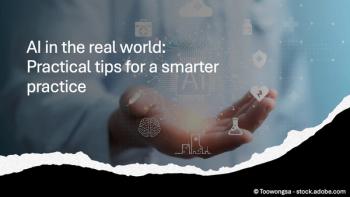
Healthcare Data without Context is Merely Clutter
Plainly put, the "data" in an EHR, especially the coded values, are not and cannot be informative in the way a narrative record can.
How can an EHR call itself a health record unless it can completely replace a traditional paper medical record? The simple answer is: It can't. There are precious few "EHRs" that began with the explicit goal of creating a computerized medical record. If they had, the effort would have undoubtedly begun at the beginning, by examining the traditional paper record to understand why it is the way it is, how it is used, and its strengths and weaknesses. It would not have started with an administrative or fiscal data collection task.
Real life is messy, unpredictable, and ambiguous - not characteristics one associates with a computer. Paper records accommodate messiness.
Practitioners may, or may not, record their encounters in as much or as little detail as felt necessary to convey to others, and to themselves in the future, what is going on, what is planned, and the reasoning behind the decisions. Some entries are best cast as narrative while others are more informative if presented in a tabular layout, a "form," or a chart. The great strength of a paper record is its ability to accommodate any and all of these formats seamlessly. After all, the patient's future depends on the quality of what you record. As time passes, if is not recorded it is lost - as if it never happened. To quote Daniel Kahneman slightly out of context, when you look at a chart (or a computer system), what you see is all there is (plus what little you may remember personally).
In the paper chart, the entries that describe the patient and care delivery are unfiltered. When combined with its context, this material can not only support patient care, it can be re-purposed for things such as research and quality improvement projects. True, someone must locate and read the potentially relevant charts and abstract "data," but this is actually an advantage because only people can turn the material into information. Since every need is different in some way, it is neither redundant nor a waste of effort to re-read the chart in the context of the current need. It insures that what is abstracted is relevant.
Today's EHRs interfere with - or simply do not allow - the most basic of functions of the paper chart: capturing reality as it unfolds, unconstrained by preconceived notions of what should happen. Data collection, on the other hand must be pre-planned and limited to what was planned. You will recognize this in today's EHRs that force physicians to enter data, coded and otherwise, in a way that is devoid of context. This data-centric view frequently reveals itself in template-based modules for creating narrative that impose a priori assumptions about what will/musthappen during a visit.
. As a result, they are difficult to use, leading practitioners to copy, paste, casually accept boilerplate defaults, and generally fold, spindle, and mutilate what they know about the patient. The resulting computerized record is not equivalent to a paper chart. It is not even a close second.
To reiterate: The "data" in an EHR, especially the coded values, are not and cannot be informative in the way a narrative record can. Data entry and coding strip away the context and nuance. What is left cannot be used as a reliable basis for clinical decisions. Reports based on the data, even under optimal conditions, are highly unreliable because it is almost impossible to tell which records to include in, or exclude from, the denominator.
If conveying information to others were easy, we would only need one book, one blog article, and a very small vocabulary, not the 1,013,913 words that made up the English language (as of January 2012). Part of what makes a good physician is the ability to assimilate data and context, become informed, and then communicate the patient's condition and their intentions clearly and unambiguously to others - not an easy task and one for which today's EHRs offer precious little help.
Take home lesson: Data + context can be informative to people. When people become informed they can be said to possess information.
Computers can neither store nor represent information, only people can do that. Computers could store data + context, but most don't. The context is, at best, implied and at worst, unknown. Data devoid of context are meaningless.
Next week, more on data.
Newsletter
Optimize your practice with the Physicians Practice newsletter, offering management pearls, leadership tips, and business strategies tailored for practice administrators and physicians of any specialty.











